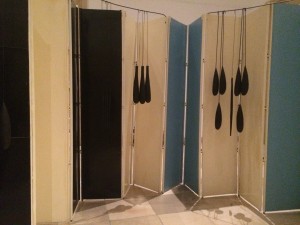Last September 28th. at the Illinois College of Architecture; a fascinating lecture by Mark Wigley on Constant’s New Babylon, preceded by a.o. a brief introduction from Trudy Nieuwenhuys-van der Horst, wife of Constant and founder of the Fondation Constant. Wigley shows in particular the relevance of New Babylon for our networked world and emphasizes it value where it concerns the – again – actual important of hospitality, given the increasing numbers of refugees worldwide.
actual: currently the Reina Sofia Museum in Madrid offers a extensive exhibition of ‘New Babylon’, in close cooperation with Gemeente Museum the Hague and the Fondation Constant, until Feb. 29th. 2016.

